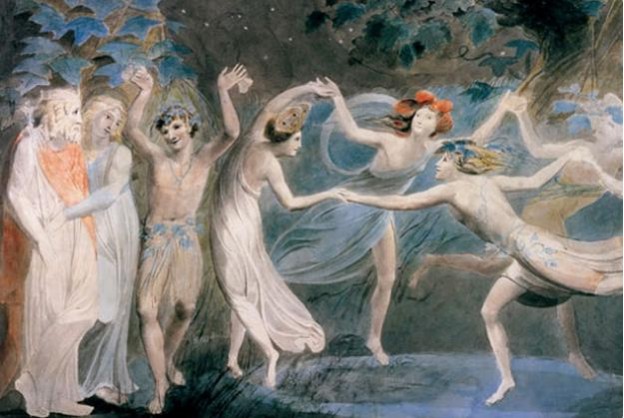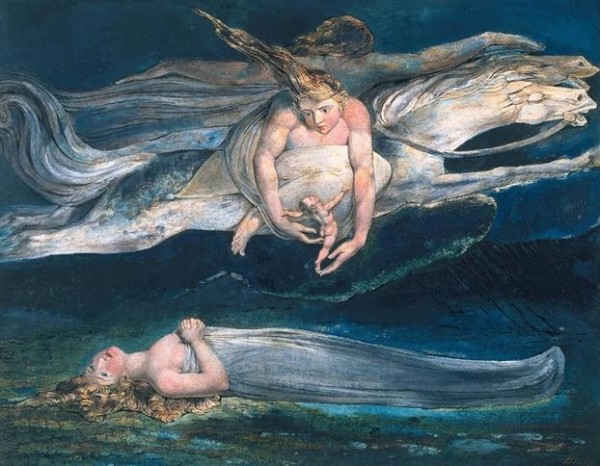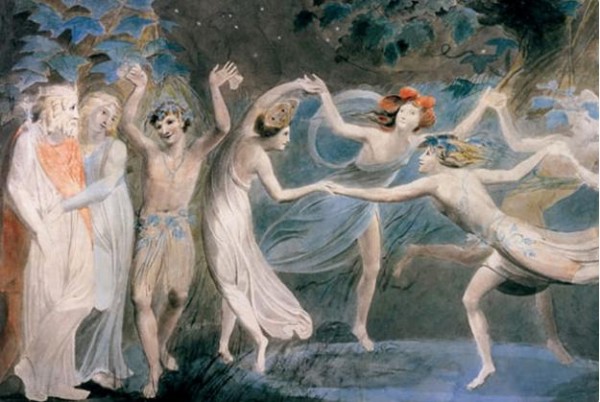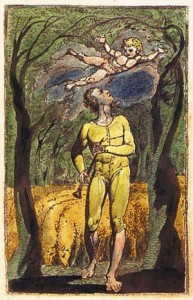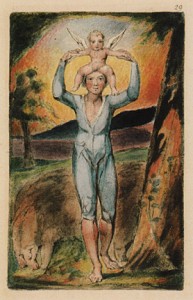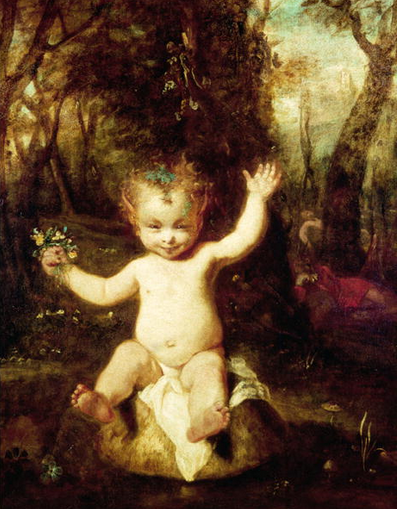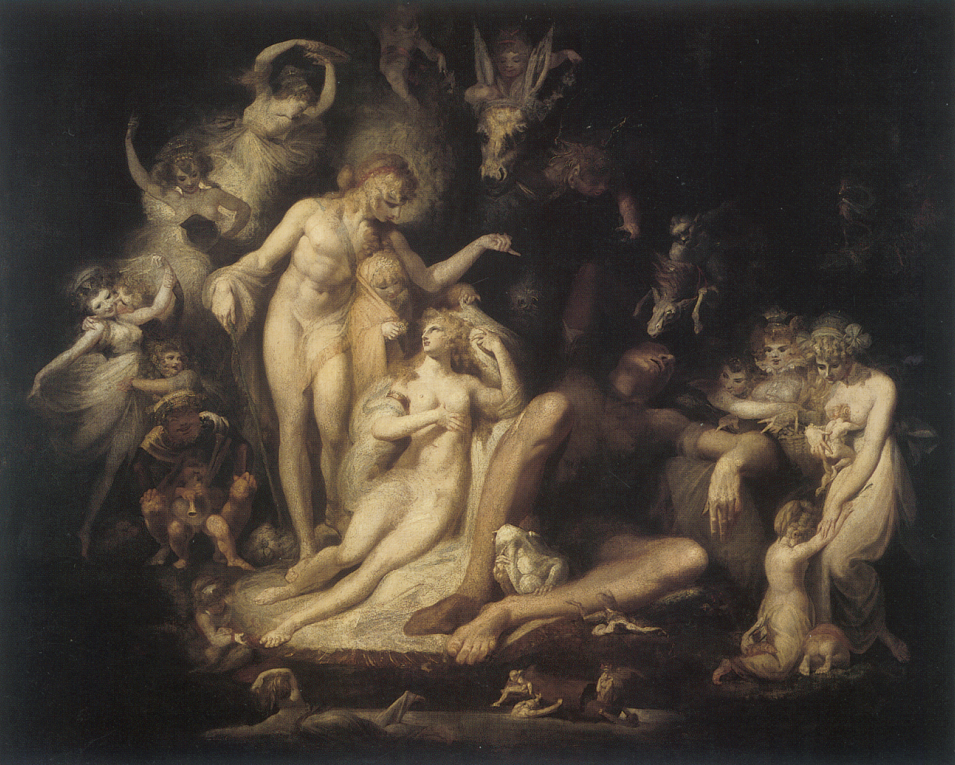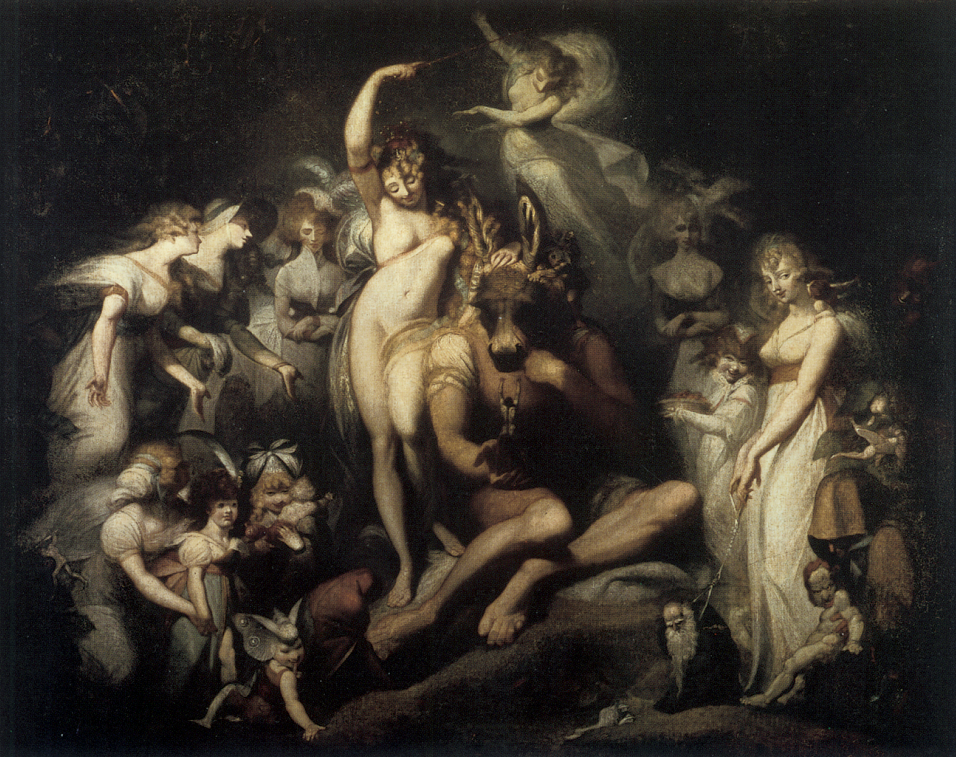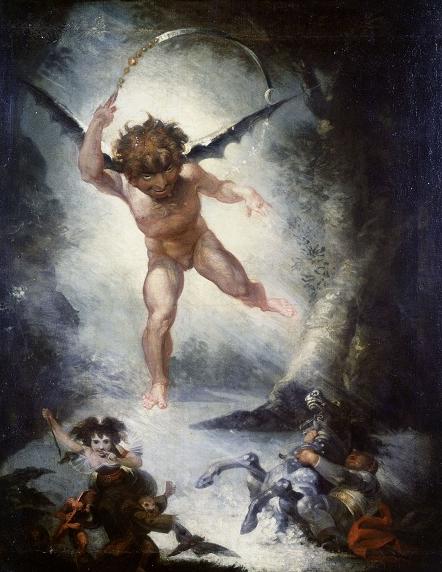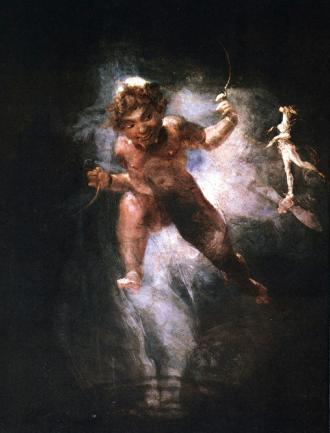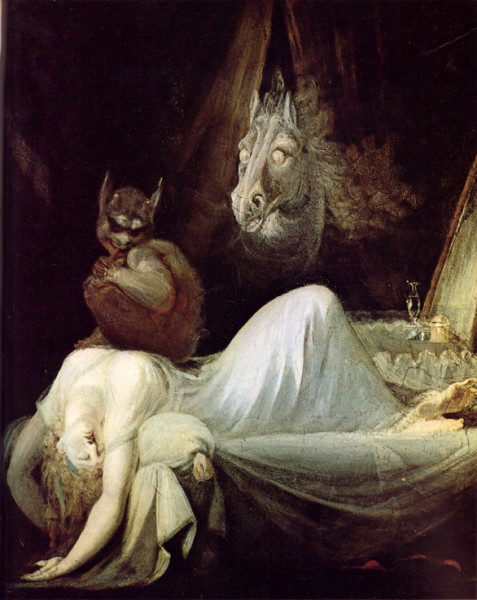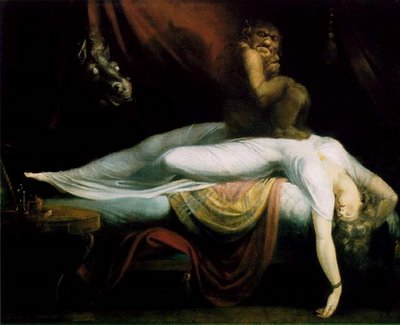The first British fairy painter of which we have any record was William Blake. Blake was by any standards, a personality. He was a superlative English poet, who wrote some of the greatest verse since Shakespeare. He embraced free love (very enthusiastically). He experimented with hallucinogens. And he also saw fairies in his garden and even a fairy funeral! His most famous fairy painting work is Oberon, Titania and Puck (which has some strange parallels with Botticelli’s Primavera) and which was painted ‘circa 1785’.
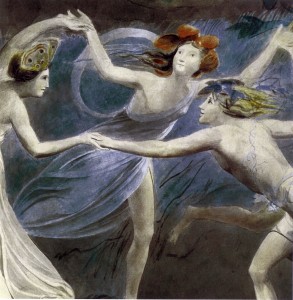
Blake is famous above all for Oberon, Titania and Puck, but fairies – or fairy-like creatures are forever appearing in his work. A angel/fairy child appears in Blake’s Songs of Innocence (1789) on both the frontspiece and inside.
Blake’s illustrations for Milton, from towards the end of his life, also borrow from fairylore (1820). There is The Goblin, which seems almost a creature of the stars; The Night Startles by the Lark and the sun burning creation (The Sun in His Wrath). 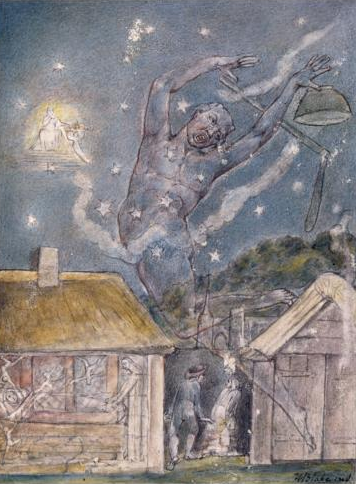
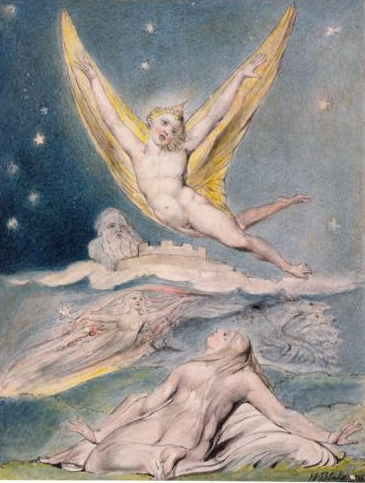
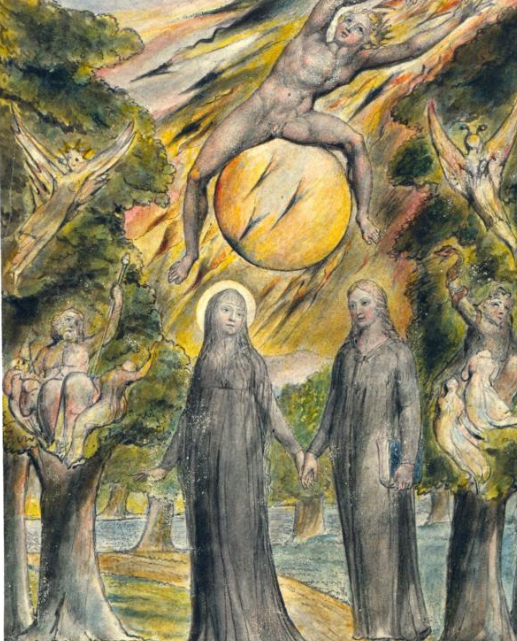
Finally, there is a curious work, Pity, based on a line from Macbeth (1,7: ‘pity, like a naked newborn babe / Striding the blast, or heaven’s cherubim horsed / Upon the sightless couriers of the air’) which could almost be imagery from the wild hunt, it could certainly be used as such. Pity is at the head of this page.
Blake’s influence was slight, at least in his day. But there must have been something in the air. Sir Joshua Reynolds experimented with Puck (above), in 1789. More interesting was Johann Heinrich Fuseli, who used to eat raw meat before his bed time to make his dreams more vivid: fairies came out the other end…
Titania’s Awakening (above) and Titania and Bottom below.
Fuseli also experimented with darker images. Take this example of bat-winged puck from 1790, the first time in history that a fairy is depicted as having wings in a work of art.
Fuseli fixated on Puck and produced some of the most brilliant depictions of Robin Goodfellow ever made. What, for example, would you do to have this on your wall?
And here are two Fuseli paintings of ‘Nightmares’, note the traditional motif of the dwarf that sits on the sleeper’s chest.
And watch out for the horse (the nightmare).
